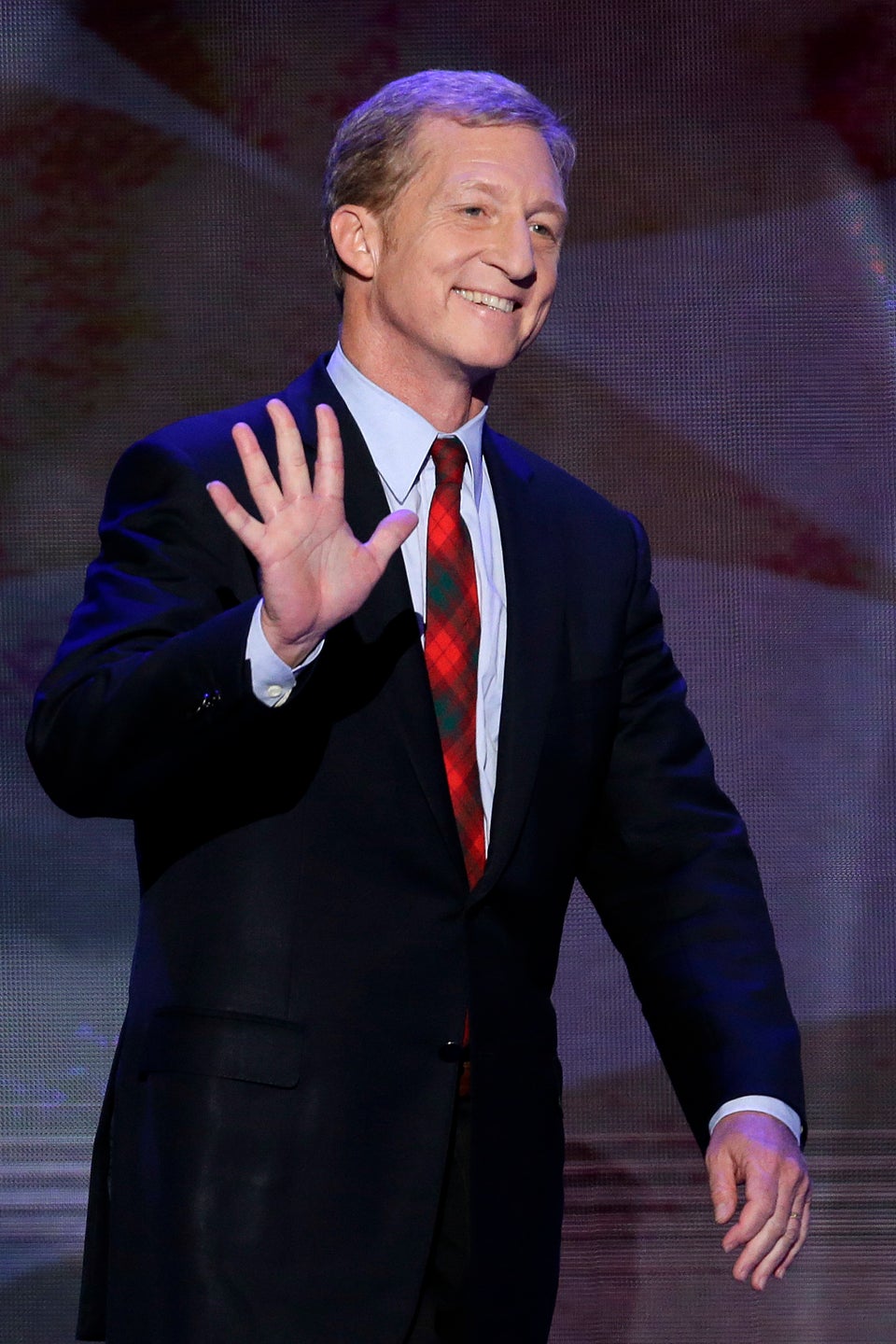
WASHINGTON -- Four years ago the U.S. Supreme Court ruled in the Citizens United v. Federal Election Commission case that corporations could spend unlimited sums of money on independent political spending. That ruling also applied to labor unions and, following a subsequent lower court ruling, to individual donors, as well.
The ensuing four years have seen significant changes to the way campaigns are funded, and an increase in influence for big money donors, as the independent political spending allowed by the court exploded. As these groups have spent more money, the sources of a large portion of their spending have gone undisclosed.
Below are seven charts to help you understand the impact of the Citizens United ruling as it reaches its fourth year:
Big Money Dominates
Source: Center for Responsive Politics.
According to the Center for Responsive Politics, the top 1 percent of super PAC donors accounted for 68 percent of all contributions made to super PACs in the 2012 election, the first full election cycle following the ruling.
These donors were led by casino billionaire Sheldon Adelson and his family, who combined to give more than $93 million to super PACs. The super PAC, created following both the Citizens United and the related SpeechNow.org decisions, became the primary vehicle for independent spending for the wealthy. While these groups are required to disclose their spending, they are also allowed to spend all of their funds on electoral efforts, unlike nonprofit organizations. But more on that later.
The top 1 percent of super PAC donors reads like the Forbes 400 or a guest list at Davos. Former New York City Mayor Michael Bloomberg operates his very own super PAC. The libertarian venture capitalist billionaire Peter Thiel became the largest donor to the Club for Growth's super PAC as it worked to defeat establishment Republicans in primary campaigns. And billionaire hedge funders James Simons, Robert Mercer, Paul Singer and Ken Griffin all gave millions.
Billionaires now have an easy outlet for their entrepreneurial endeavors in politics. The only question is whether they want their names on a plaque -- in this case, a disclosed FEC report -- or if they would rather remain anonymous.
Disclosures Plummet, Dark Money Rises
Source: Center for Responsive Politics.
In the decision released four years ago, Justice Anthony Kennedy justified his ruling by stating that disclosure would mitigate any problems with the newly allowed independent spending.
"With the advent of the Internet, prompt disclosure of expenditures can provide shareholders and citizens with the information needed to hold corporations and elected officials accountable for their positions and supporters," Kennedy wrote.
"The First Amendment protects political speech; and disclosure permits citizens and shareholders to react to the speech of corporate entities in a proper way," the decision continued. "This transparency enables the electorate to make informed decisions and give proper weight to different speakers and messages."
Of course, it isn't so simple. The court's ruling opened the door for nonprofit corporations, whether they are funded by corporations or not, to spend unlimited amounts on independent campaign activity so long as they remain in bounds of the lax tax laws that govern them. These tax laws do not require the disclosure of nonprofit donors. In fact, prior court rulings and Federal Election Commission legal interpretations had protected nonprofits from donor disclosure.
Nonprofits are not ideal for individuals or corporations who want to spend money on independent political activity, due to tax laws requiring these groups to spend a majority of their time outside of politics. But the donor anonymity they are guaranteed can make nonprofits worth the investment. The billionaire Koch brothers and their donor collective used a labyrinthine network of nonprofit groups to pump hundreds of millions of dollars into both the 2010 and 2012 elections.
One of the most obvious examples of donors' desire for anonymity comes in the form of the Crossroads groups founded by Karl Rove. There is American Crossroads, the super PAC that discloses its donors, and there is Crossroads GPS, the nonprofit that does not. As evidenced in the chart below, donors have chosen anonymity at a rate of two-to-one since the groups were founded in 2010.
Source: Federal Election Commission and Internal Revenue Service.
More Money Than Candidates
Source: Center for Responsive Politics.
In the 2012 election, independent groups spent more money than the actual candidates in three general election Senate races. That's right -- in Indiana, Virginia and Wisconsin, the major party candidates in the general election were outspent by independent groups.
Source: Center for Responsive Politics.
That same dynamic played out in at least six House races in 2012. In California's 35th District, independent groups -- and really, just one independent group -- spent two times as much as the candidates. In this race between two Democrats, Michael Bloomberg's super PAC intervened with $3.3 million as the billionaire mayor sought to defeat the pro-gun incumbent Rep. Joe Baca (D). And he did: Bloomberg's super PAC spending is credited with helping the heavily underfunded Gloria Negrete McLeod defeat Baca.
Shattered Television Advertising Records
Source: Wesleyan Media Project. Numbers are based on data released in the paper titled, "Negative, Angry, and Ubiquitous: Political Advertising in 2012."
The Wesleyan Media Project tracked television advertising in the 2012 election and found that advertising in the presidential campaign shattered previous records for money spent and advertising volume.
The number of television advertisements in the presidential general election jumped from approximately 753,000 in 2004 to approximately 1.14 million in 2012. While the decision by both President Barack Obama and also GOP nominee Mitt Romney to forgo public funding accounts for some of the increase, the rise of independent spending also played a major role.
"What explains the tremendous increase in advertising volumes in the presidential race?" Wesleyan University assistant professor Erika Franklin Fowler and Washington State University professor Travis Ridout explained in a paper that was a product of the Wesleyan Media Project's work. "Certainly part of the answer is a competitive race aided in large part by the ability of super PACs and other non-party organizations to raise considerable dollars in 2012, much of which was used to sponsor advertising."
The candidates, however, took decidedly different approaches to the new world of independent spending. While the Romney team rapidly embraced the new world of super PACs and nonprofits, the president, who once worried about the corrupting effects of campaign finance on the political system, slowly came around to embracing support from a super PAC.
But Team Romney's support from, or rather, reliance on, the outside groups ultimately can be seen as a crutch used to prop up a candidate who could not challenge Obama's fundraising supremacy. Independent groups in support of Romney aired more ads than the Republican candidate and the Republican National Committee aired combined. The independent groups did this at a prohibitively higher cost, too.
Source: Wesleyan Media Project. Numbers are based on data released in the paper titled, "Negative, Angry, and Ubiquitous: Political Advertising in 2012."
"This was due, in part, to the fact that purchasing advertising as a candidate was much cheaper this cycle than purchasing air time through any other organization, because candidates qualify for the lowest unit rate and super PACs do not," Fowler and Ridout explained.
This problem -- posed largely, not exclusively, for Republicans -- could raise eyebrows about the whole new independent political spending world. Is it really worth it to rely so heavily on a network independent groups working at the behest of their billionaire funders? That question, however, is likely to go unanswered, as the consultants running these groups are making entirely too much money.

